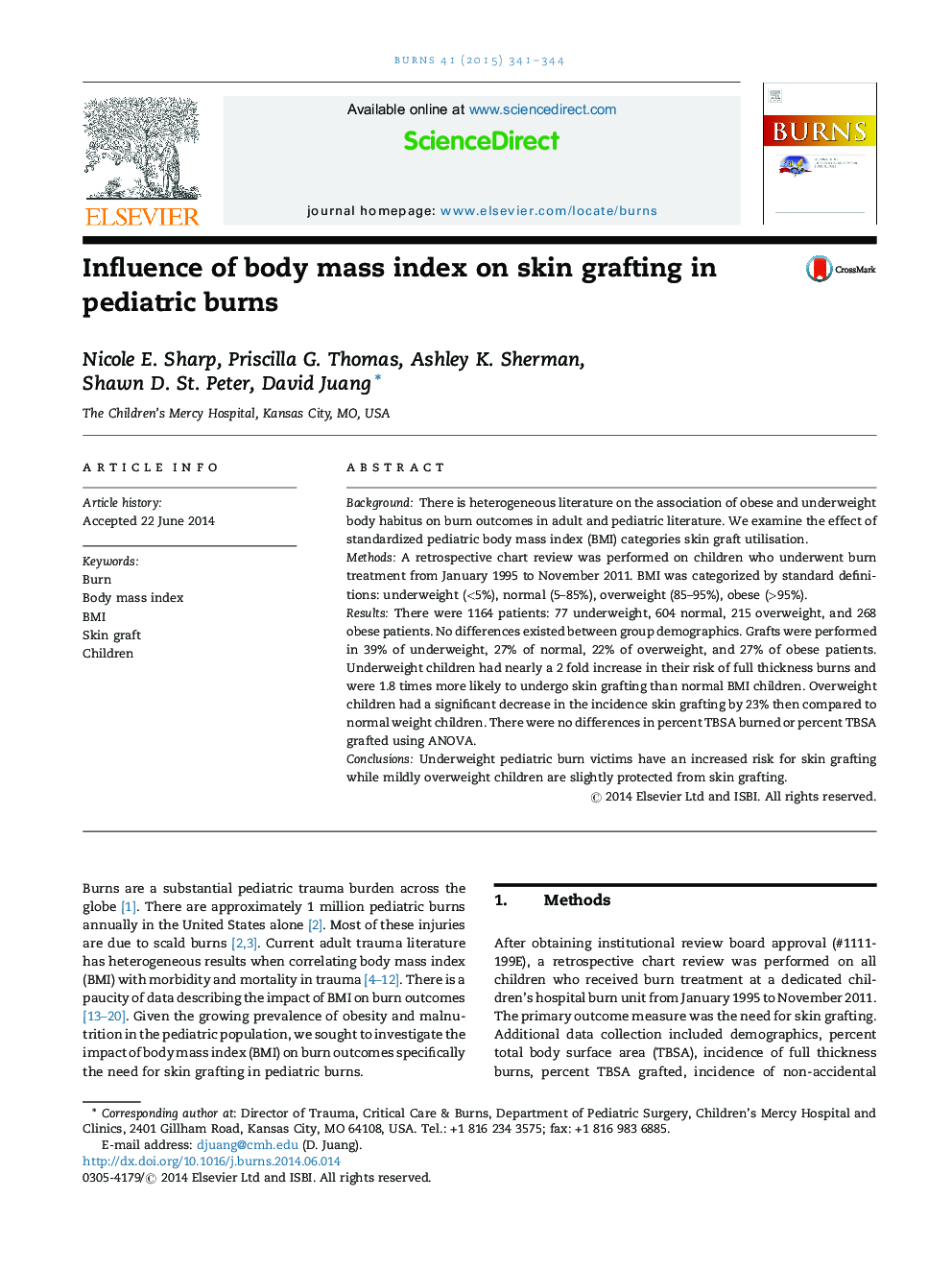| Article ID | Journal | Published Year | Pages | File Type |
|---|---|---|---|---|
| 3104450 | Burns | 2015 | 4 Pages |
•We examine the effect of body mass index (BMI) on the need for skin grafting.•Mildly overweight children are slightly protected from skin grafting.•Children with a BMI <5th percentile should be identified as an at-risk group for skin grafting.
BackgroundThere is heterogeneous literature on the association of obese and underweight body habitus on burn outcomes in adult and pediatric literature. We examine the effect of standardized pediatric body mass index (BMI) categories skin graft utilisation.MethodsA retrospective chart review was performed on children who underwent burn treatment from January 1995 to November 2011. BMI was categorized by standard definitions: underweight (<5%), normal (5–85%), overweight (85–95%), obese (>95%).ResultsThere were 1164 patients: 77 underweight, 604 normal, 215 overweight, and 268 obese patients. No differences existed between group demographics. Grafts were performed in 39% of underweight, 27% of normal, 22% of overweight, and 27% of obese patients. Underweight children had nearly a 2 fold increase in their risk of full thickness burns and were 1.8 times more likely to undergo skin grafting than normal BMI children. Overweight children had a significant decrease in the incidence skin grafting by 23% then compared to normal weight children. There were no differences in percent TBSA burned or percent TBSA grafted using ANOVA.ConclusionsUnderweight pediatric burn victims have an increased risk for skin grafting while mildly overweight children are slightly protected from skin grafting.
